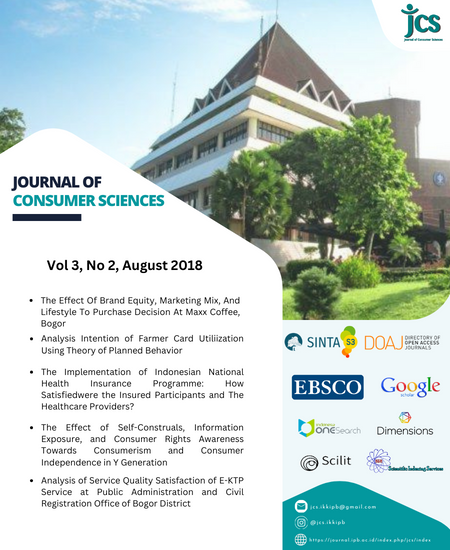Analysis Intention of Farmer Card Utiliization Using Theory of Planned Behavior
Abstract
One of the Indonesia government’s policies in an effort to increase production and productivity of agricultural commodities is providing subsidized fertilizer for farmers. Currently, the government implements the farmer card program as an effort to facilitate farmers in purchasing subsidized fertilizers. This program will be implemented simultaneously in 2020, but in 2018 there are some areas that already implemented the farmer card system as a trial area. This study aims to analyze the farmer intention in term of using a farmers card in Rancaekek. The analysis used is Theory of Planned Behavior (TPB), statistical analysis, and structural equation modeling (SEM). The research design used cross-sectional study. The sampling method used probability sampling - simple random sampling. 100 farmers were interviewed in sub-district Rancaekek from 1492 farmers.
Based on the statistical analysis using SEM showed that attitude toward behavior, subjective norm, and perceived behavioral control are significant and have positive effects on the intention of using farmers card. So that, the higher farmers attitude toward behavior, subjective norm, and perceived behavioral control, the higher the farmer intention of using farmer card. All of the variable Theory of Planned Behavior is a determinant factor in influencing the intention of using the farmer card. Attitude toward behavior has the largest influence on farmers intention of using farmer card and subjective norm has the smallest influence in farmers intention of using farmer card.
Authors
Authors who publish with this journal agree to the following terms:
- Authors retain copyright and grant the journal right of first publication with the work simultaneously licensed under a

This work is licensed under a Creative Commons Attribution 4.0 International License. that allows others to share the work with an acknowledgement of the work's authorship and initial publication in this journal. - Authors are able to enter into separate, additional contractual arrangements for the non-exclusive distribution of the journal's published version of the work (e.g., post it to an institutional repository or publish it in a book), with an acknowledgement of its initial publication in this journal.
- Authors are permitted and encouraged to post their work online (e.g., in institutional repositories or on their website) prior to and during the submission process, as it can lead to productive exchanges, as well as earlier and greater citation of published work (See The Effect of Open Access).







